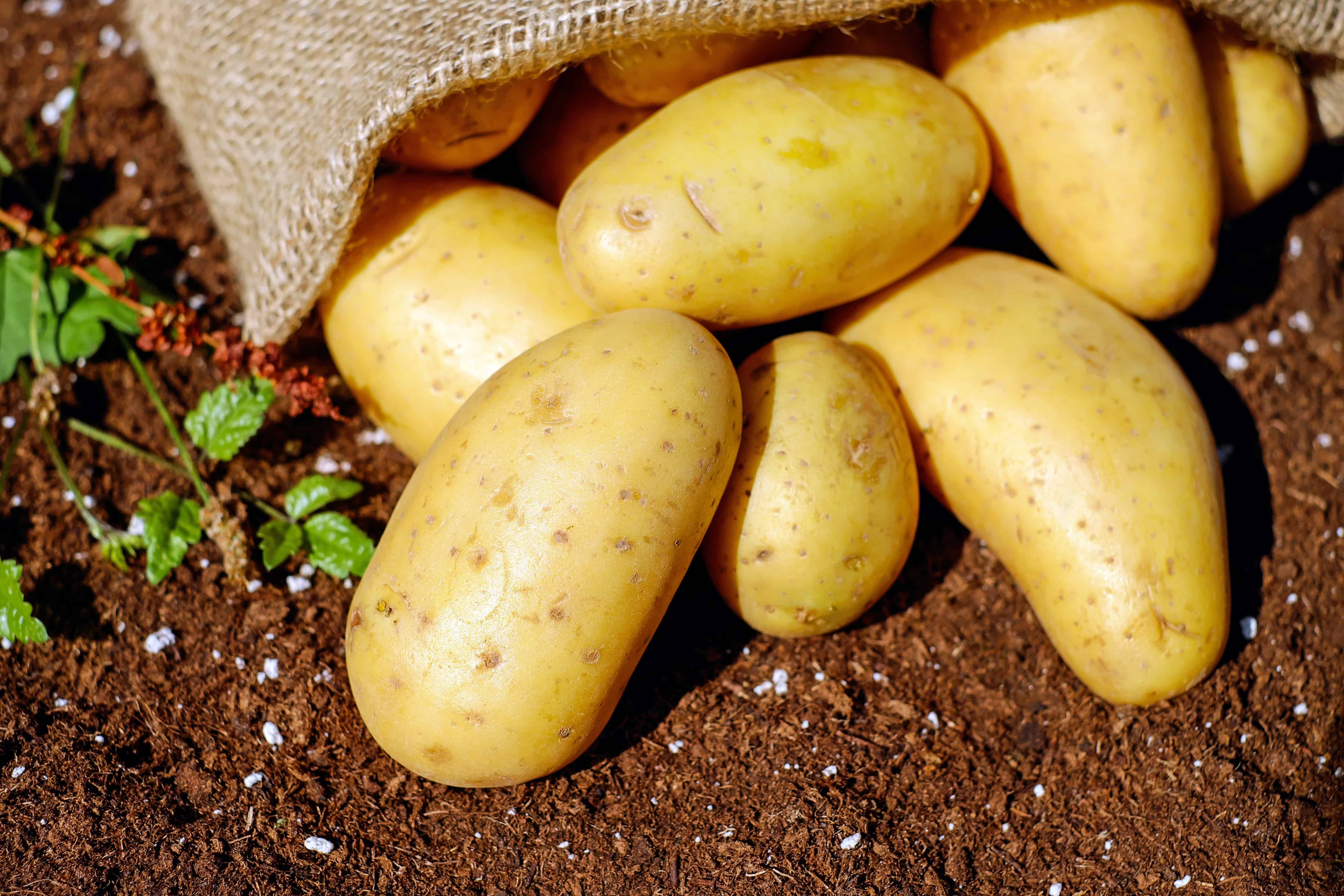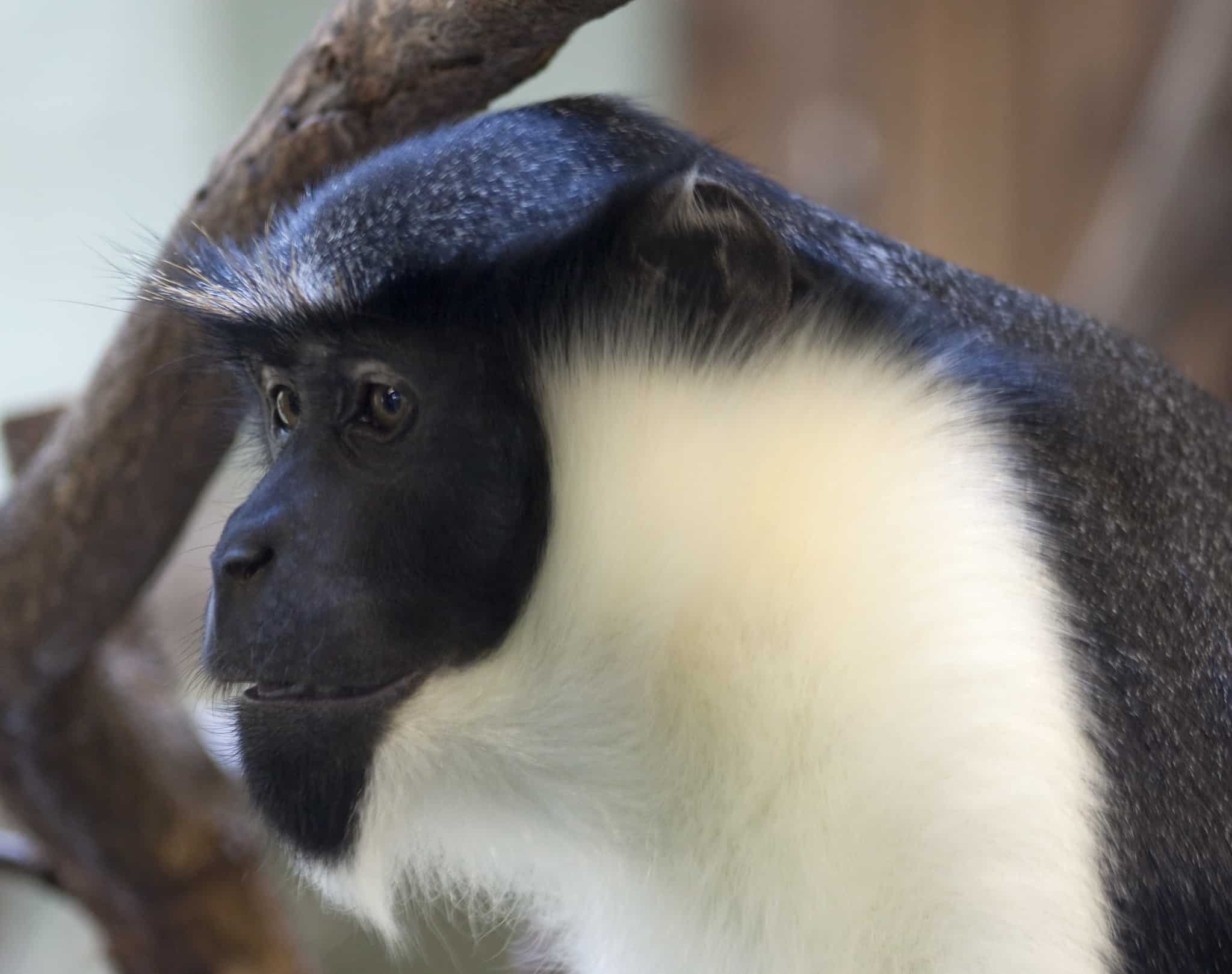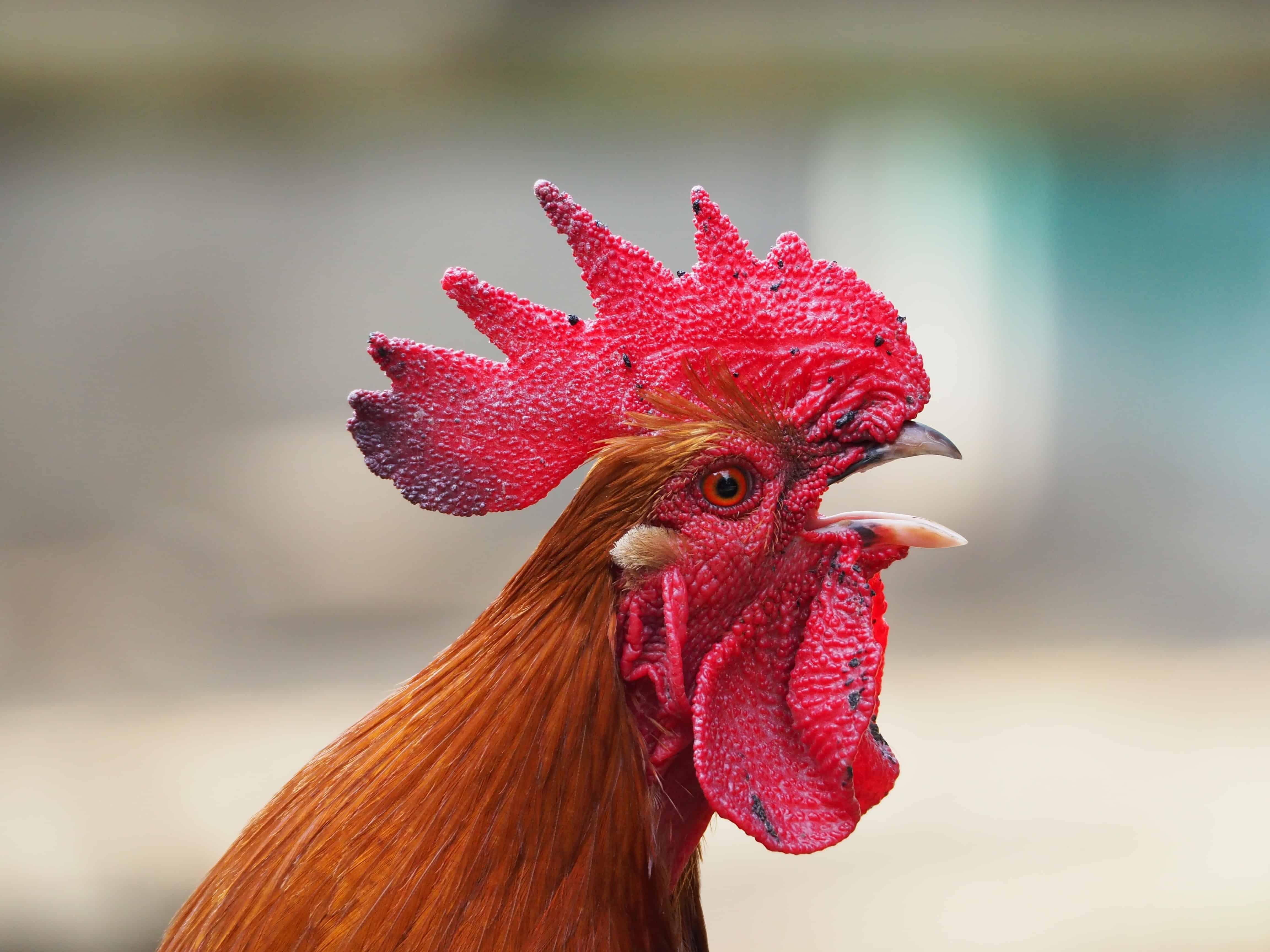
The world is full of strange and wonderful things. Often there are more weird and unexplainable occurrences that pique our curiosity. This list of weird facts will give you exactly that. Here are 300 weird facts that are sure to confuse and amaze you at the same time.
It is physically impossible for you to lick your elbow.
This is because the average upper arm is too long for our tongues to be able to reach our elbows. Go on, try it.
Dueling is legal in Paraguay.
It is legal so long as both parties have been registered as blood donors.
There are 366 dimples on a regulation golf ball.
The dimples help the ball travel farther.
The moon is moving away from the Earth.
85 million years ago, the moon orbits between the Moon and Earth were only 35 feet away from the planet’s surface.
Ketchup leaves the bottle at a measured speed.
It leaves the bottle at a rate of 25 miles per year.
A baseball has a lifespan.
Baseballs from the Major League Baseball association can last up to 7 pitches.
There is a town called Calama has never experienced rain.
It is found in the Atacama desert of Chile.
Most lipsticks contain fish scales.
This is also known as pearl essence. It is what gives the lipstick the shimmering appearance it has.
Lightning strikes the earth 100 times each second.
Each bolt contains up to one billion volts of electricity. This calculates to about 8 million lightning strikes per day.
Your heart beats over 100,000 times a day.
The average heart rate is 80 bpm.
Possums do not play dead.
They pass out from fear of their predators.
A Costa Rican worker that makes baseball earns $2,750 annually.
The average American pro baseball player earns $2,377,000 per year. The majority of regulation baseballs are stitched by hand.
A jiffy is an actual measure of time.
It is calculated as 1/100th of a second. This is 10 milliseconds.
Babe Ruth out-homered every American league team.
The first time that this happened was in 1927. This totaled to around 35 different pitchers that Ruth had out-homered.
Recycling glass jars save energy.
One glass jar can attain enough energy to power a television. This power can last up to three hours from one jar alone.

San Francisco's cable cars are counted as a national monument.
They are also the only monuments that can move. They are also able to carry passengers along its tracks.
The match was invented after the lighter.
The first match was made in 1826. However, the first cigarette lighter was made in 1823.
Michael Jordan makes a lot of money from Nike.
This is more than what all of the Nike factory workers in Malaysia annually make combined. This is enough money to be able to feel the entire world population a meal.
The five colors on the Olympic flag were carefully selected.
This is because at least one color on this flag can be found on any flag in any country.
Antares is 60,000 times larger than the sun.
Antares, often referred to as “the heart of the scorpion” due to its location in the Scorpius constellation, is a red supergiant star. The name “Antares” is derived from the ancient Greek term “Anti-Ares,” which means “rival of Mars” because of its similar reddish hue to the planet Mars.
There are constantly around 1,800 thunderstorms that occur somewhere on the planet.
This is a constant phenomenon that occurs on the planet. This totals to around 16 million annually.
The chicken came before the egg.
At least, according to the Christian bible. This is stated in Genesis 1:20-22.
A kiss stimulates 29 muscles and chemicals.
This causes the person to relax. Women are found to like light and gentle kisses, while men are found to enjoy more intense ones.
Left-handed people are better at particular sports.
Mainly those that involve spatial judgment and fast reactions. This was stated by a research study comparing the performance of left-handed and right-handed athletes.
A giant tortoise that was believed to be extinct was found in the Galapagos.
Previous to this, this species of giant tortoises had not been spotted for over 100 years. Scientists had believed them to be extinct already until 2019.
Ancient Egyptians slept on stone pillows.
This was discovered by translating ancient texts from Egyptian ruins. The Egyptian word for headrest was roughly translated to a stone pillow.
Coca-cola was originally green.
However, the company itself said that this may be due to the green bottles they once used. New marketing techniques switched to plastic bottles instead of glass later on.
Arizona forbids camel hunting.
This act has been made illegal within Arizona’s borders. Any misdemeanors towards camels are also forbidden.
36% of the American population has stated that God has spoken to them.
This totals to about 118,008,000 individuals. More often these people suffer from hallucinations.
You can buy a toupee for your dog in Tokyo.
You can also buy them an assortment of accessories from capsule toy machines. This also includes toys and other small clothing for your pets.

Only one sport has ever been played on the moon.
A game of golf on the moon was recorded in 1971. Alan Shepard hit a golf ball on the surface of the moon.
There is a Superman in every episode of Seinfeld.
There is also another myth that there is a superman reference within every episode. This is because Jerry Seinfeld is an avid fan of Superman.
A premature birth takes place when the baby arrives earlier than 37 weeks during pregnancy.
Those who are born early will often have complicated medical problems. Premature birth usually occurs when not enough nutrition is given to the mother during pregnancy. A few famous premature births include Albert Einstein, Mark Twain, and Isaac Newton.
Humans did not come from monkeys.
To be more precise, humans and monkeys had a common ancestor from 25-30 million years ago. From then, each species evolved differently.
Most of the viruses embedded in our DNA are gone already.
Most of these viruses have already gone extinct due to human evolution and changes in environments. Modern medicine also played a role in the extinction of these viruses. If scientists were to revive any of these viruses, it could cause a major outbreak that humans won’t quickly heal from.
The Goodyear blimp is the official bird of Redondo Beach.
While it may not be a bird per se, the coastal city still named it as such. Redondo Beach is situated near the Goodyear Blimp’s home airport in California.
Americans spend an average of $1,092 on coffee per year
This breaks down to roughly $92 a month, which is about 3 dollars worth of coffee a day.
2 out of 1000 children are born deaf in the United States.
More children will lose their hearing later on as they grow up. This can occur later on during childhood or as adults. Deafness is also the number one birth defect recorded in the United States.
Driving to space would only take an hour.
Theoretically, this is possible if you were to drive in a straight line upwards into the atmosphere at a speed of 60 mph.
Every three seconds, there is a birth taking place somewhere in the world.
There are approximately 360,000 births that take place per day. This is around 15,000 births per hour.
Specifically shaped cornflakes can be sold on eBay.
A cornflake in the shape of Illinois was once sold on the E-commerce platform for a total of $1,350. The buyer of this single flake stated that he wanted it for his traveling museum.
The Arizona capitol building roof holds around 5 million pennies.
The amount of copper on this rooftop found in Pheonix is equivalent to around 4,800,000 pennies. This is around $50,000 dollars.
clouds hold a lot of weight.
The fluffy cotton clouds you see in the sky are able to hold over one million pounds. Its weight is calculated by taking the water density and multiplying it by its volume.
The Apollo 11 crew pre-made autographs for insurance.
The Apollo 11 crew was prepared for the chances that they may not be able to return from their voyage. In an attempt to financially prepare their families, they signed many trinkets that their families could sell if the mission failed.
The longest recorded tennis match lasted for 11 hours.
This took place at Wimbledon 2010. John Isner won this match against Nicolas Mahut and took over 3 days to complete.

A hotel in New Orleans offered a $15,000 stay in a contest.
The rules simply stated that the prize would go to whoever could steal the most outrageous item from them. This contest was published to the public on the hotel’s 125th anniversary.
Shakesphere's epitaph is cursed.
In 1616, Shakesphere died at the age of 52 and was buried in a tomb. The epitaph featured on his grave was made to ward off grave robbers.
All swans in England belong to the Queen.
Any unclaimed swans that are found swimming in the open waters of England and Wales are automatically hers. This was a law established and originated in medieval times when swans were a delicacy for the wealthy.
Most wines are not vegetarian or vegan-friendly.
Many wines include a fining agent such as eggs to soften astringency from tannins and remove other sediments.
A pineapple plant can only produce one pineapple a year.
After fruiting, the plant dies. However, before it dies it also produces an offspring. These plantlets were then grown into another pineapple.
China is the world’s largest silk producer.
Over 150,000 metric tons of silk are produced annually. This accounts for 78% of the world’s silk production.
Ketchup was once used as medicine.
This was often sold at pharmacies in the 1830s. It was believed to be a cure for indigestion.
A person is unable to detect smells when they suffer from anosmia.
There are rare cases in which a person may be born with anosmia. This condition is called congenital anosmia.
A Poison Garden in England is filled with venomous plants.
The Alnwick Garden is a garden complex by Alnwick Castle in Northumberland, England. These historic gardens were revived at some point, and a Poison Garden was added in 2005.
Peas are the oldest vegetables.
The oldest known vegetable is the pea which tracks back to Stone Age settlements over 8,000 years ago. This vegetable has been cultivated by humans for centuries.
The winning lottery combination was once foretold in a fortune cookie.
This resulted in over a hundred winners for the 2005 lottery. All of these winners took home around $100,000-$500,000 depending on their original bet.
25% of bones in human adults are located on their feet.
The feet also contain about 20-25% of joints found in the human body. Each foot contains 33 joints. The whole body contains a total of 250-300 joints in total.
68% of plant species are endangered.
Over half of all plant species are now classified as endangered. Prairie orchids, rafflesia, and Texas wild rice are only a few plant species endangered by climate change.
Redwoods are the tallest trees.
These trees are known to reach over heights of 350 ft. The tallest living tree in the world is Hyperion at 380 ft.
A potato's skin is much healthier than its core.
To absorb all of the potato’s minerals and vitamins, the skin should also be consumed. It is better to leave the skin on potatoes while cooking because all its vitamins are in the skin.

A meteor with the force of 10 atomic bombs crashed on Earth and no one noticed.
On December 18, 2018, a meteor hit our atmosphere but was failed to be detected by NASA at the time. The reason for this is because it took place in the Bering Sea which was a closed area.
Strawberries are the only known fruit to grow their seeds externally.
When a strawberry flower is pollinated, the fruit will not swell. Instead, it fertilizes the ovaries in the flower and forms small dry fruits separately.
Scientists can’t explain what causes four-leafed clovers.
The common explanation for this phenomenon is that the clover experienced a mutation of recessive genes. This is a typically rare occurrence.
A rare pink dolphin resides in Louisiana.
This rare dolphin was first discovered in 2007. Its pink color is said to come from a rare genetic mutation and no other pink dolphins have been discovered since.
Bamboos are a form of grass.
Because of the great lengths, bamboo can grow, they are considered as the largest members of the grass family. In total, there are around 91 genera and over 1000 bamboo species.
The number 57 on the bottle of Heinz ketchup has a meaning.
This number represents the number of products the company has. However, in the beginning, it was said that Henry Heinz simply used the number because he believed it was lucky.
Plants prevent erosion and landslides.
They can do this by keeping the soil around them firm with their roots. Crops such as rye and clover are good choices for erosion control.
Rainbows at night exist.
These rainbows are called moonbows and they only occur when there is a source of water near a full moon. If the moon is in any other phase, the light will not be enough to cause a moonbow.
About 80,000 plant species are edible.
However, in the present-day, only 150 species are regularly cultivated. 30 of these products make up 95% of the human’s usual calorie and protein intake.
Bumblebees are able to fly at great heights.
Bumblebees are able to fly beyond the height of Mt. Everest. Researchers were shocked to discover that two bees that they were tracking were able to fly up to 30,000 feet high.
Ripe cranberries can bounce.
Cranberries have air pockets inside of them that cause them to float and bounce. Unripe berries can be easily segregated by seeing if they have damage from an attempted bounce.
The Arabic word for fingers translates to ‘banana’.
The Arabic word is banan. The banana fruit is harvested from the plant as a whole rack. A rack of bananas is also referred to as a hand.
Turnips are high in Fiber.
They are also a good source of vitamin C, Potassium, and Calcium. Turnips also help lower the risk of intestinal problems like diverticulitis.
Eating too many onions can cause sleepiness.
The onion is full of beneficial minerals that are good for the human body. However, it is also a natural sedative because they are rich in L-tryptophan.
The femur is the largest bone located in the human body.
The head of the femur fits into your hip socket and the bottom ends of it connect to your knee. More commonly, this bone is referred to as the thigh bone.

The world’s most dangerous tree is called the manchineel.
This is native to the tropical southern North American and northern South America. Every part of the tree contains toxins that can cause blisters and skin breakouts on human skin just from touch.
The Terminator was sold for a dollar.
The first of the five movies of the Terminator franchise earned a total of $78.3 million worldwide at the box office. However, the rights for the movie was sold for a mere dollar.
Nicotine is poisonous to insects.
The tobacco plant has a power neurotoxin that dangerous for insects. While many other plants also have this, the concentration of nicotine in the tobacco plant is much higher than any other.
The garlic mustard is a member of only one family.
It is a member of the mustard family. Garlic mustard is a biennial plant that has a life span of two years.
About one cluster of grapes make up one glass of wine.
This is around a total of 75 grapes.
The scientific name used for flowering plants is Angiosperm.
This name refers to the seeds that are borne in capsules or fruits. This group consists of many plants such as shrubs, grass, and most trees.
Your eyebrow shapes can predict your personality.
Straight eyebrows are said to indicate a strong fact-oriented and direct personality. Curved eyebrows, on the other hand, indicate a more people-oriented personality.
In Greek, the Iris flower translates to rainbow.
Iris was also known to be the goddess of the rainbow in ancient Greek Mythology. It is believed that its name refers to the wide variety of colors the flower is found among its species.
A plant that consumes rats can be found in the Philippines.
Scientists have discovered this rat eating pitcher plant in the Philippines in the year 2009. This newly discovered pitcher plant is considered as one of the biggest carnivorous plants on the planet.
An organism with a dissapearing butt exists.
Scientists named this the comb jelly or the sea walnut. Research has stated that there has been no documentation of a transient anus, not even under a microscope.
The smell of freshly cut grass is noted to be the grass screaming in distress.
This smell is a chemical that grass uses to call other critters to come and rescue them. The chemical compounds that the plant releases can also be used to poison an enemy and alert surrounding plants.
Being gassy is normal.
It is considered normal to pass gas 6 to 20 times a day. The average person passes gas around fifteen times a day.
Baby kangaroos are born the size of an inch.
Some are born the size of a grain of rice or the size of a bee. Baby kangaroos are also called Joey.
Almonds are one of the many members of the peach family.
They are also referred to as the Queen of the rose family. Other family members include the peach and apricot.
Dogs should not be fed pear and apple seeds.
This is due to the seeds containing traces of cyanide in them. This substance is highly toxic to dogs in high quantities.

The chacma baboons reside in Africa’s Namib desert.
According to research, a group of chacma baboons once survived 116 days in the desert without any water. They survived solely by eating figs they found.
The blue whale is the largest known animal on the planet.
These magnificent mammals are known to grow up to 100 feet long and upwards. They weigh about 200 tons.
The little finger contributes 50% of our hand strength.
The little finger along with the ring finger act as a power bottom. The thumb, index finger, and middle finger provide dexterity.
Flies hum in the key of F.
The buzzing sound they make is caused by their wings when they fly. The sound will either be a low or high buzz depending on the species.
The webs of spiders were once used as bandages.
In ancient Greece and Rome, it was not uncommon for the people to use it as a natural antiseptic. This method helped their patients clean and disinfect their wounds and promote clotting.
Male rabbits are called bucks.
The male rabbits tend to be more friendly and relaxed while female rabbits often come off as more aggressive.
There is a quick way to escape the grip of a crocodile.
Experts state that the best way to escape a crocodile is to poke its eyes. The pain can distract the crocodile long enough for it to loosen its grip and for you to escape.
Mosquitoes are unable to penetrate silk.
Mosquitoes can penetrate through cloth with their long proboscis. However, silk has a much stronger durability than most cloths that insects cannot bite through.
Square watermelons cost more than round ones.
A square watermelon can be bought for $85. They are mostly expensive due to the intensive labor that is put into shaping them.
A tomb found in London is said to be a time machine.
One of the tombs in the Brompton Cemetary has an en entryway that features a keyhole. However, the key to this chamber has been lost for years.
Local legend believes that there is a secret in this chamber due to the gold Egyptian hieroglyphs that is decorated on the door. This has lead others to believe that it may be a time machine or a time chamber of some sort.
Christian nurses were not allowed to nurse Jewish babies.
This was declared by King Henry III in 1235. If these wet nurses were to do so, it was believed that it could weaken the faith of the infants as they grow up.
The tooth of an elephant weighs around 9 pounds.
Their teeth are made from ivory which is a white material for the tusks and teeth of animals. This is covered with an outer layer of enamel that closely resembled the coating on human teeth.
The Swiss are known to eat the most chocolate in the world.
This is closely followed by the British. Over 22.36 pounds of chocolate is consumed per person annually according to statistics.
Sumo wrestlers often make babies cry for good luck.
This is based on the Japanese belief that if a sumo wrestler can make a baby cry, then that person will lead a healthy life.
The Diana monkey takes its name from a Roman goddess.
The stripe on its head closely resembles the bow that the Roman goddess held. Diana was also called Artemis. She was known as the goddess of hunting.

A woman once found her lost wedding ring growing on a carrot in her garden.
In 1995, a Swedish woman lost her wedding ring while preparing a Christmas eve dinner. 12 years later, the ring re-emergers in her garden wrapped around a carrot.
You can gain calories by licking stamps.
Licking 1 stamp makes you consume 1/10 of a calorie. If you were to lick 3000 stamps a day that would equate to about 16 chicken nuggets from McDonald’s.
Dogs can learn commands better with hand signals.
This is also another way you can build communication and further develop trust with your pets. Professional trainers say that when a dog understands its tasks, they feel safer because they know what to do.
Only 3 mammals experience menopause.
This includes elephants, humpback whales, and also human females. However, unlike animals, human females can live much longer after experiencing menopause.
A mouse trap built 155 years ago caught a mouse in 2016.
One of the earliest concepts for mousetraps managed to capture a wild rodent in 2016. Its inventor, Colin Pullinger claimed that his device would last a lifetime.
The human bone is stronger than steel.
If you were to have a bone and a piece of steel of the same length and thickness, a bone would be five times stronger than the steel bar. However, bones are brittle and can also fracture on impact.
The oldest chocolates in the world are around 106 years old.
These chocolates date back to the coronation of King Edward VII. This is dated back to the year 1902.
The human tongue has a unique print.
Much like fingerprints, the human tongue also holds its unique pattern that can be identified differently from everyone else’s. The tongue is a unique organ that is well protected and difficult to replicate.
A tarantula can survive two years without food.
Tarantulas can go much longer without food compared to water. So long as there is water available, a tarantula will not suffer any bad side effects from starvation.
You can swim through the veins of a blue whale.
The blue whale is the largest living creature on the planet. It is so big that its veins are big enough for an adult human to swim freely around it.
The most common cause of death among babies is Sudden Infant Death Syndrome (SIDS).
Each year, over 7000 babies are lost to this phenomenon in the U.S. These equivalents to almost 1 baby dying each hour.
Bats have very thin leg bones.
Their legs are not very good for use in other tasks apart from hanging upside down. The bones in their legs are also quite fragile which means they are unable to walk. Apart from their weak legs, their knees also face backward.
Swishing wine inside your mouth allows all your taste buds to detect its flavor.
Sweetness is detected at the tip of the tongue and bitterness at the back. Sour tastes are detected on the sides of your tongue.
Your eyelids have the thinnest amount of skin on your body.
The levator palpebrae superioris muscles retract the eyelid which exposes the cornea and gives you vision. The eyelids can be moved both involuntarily and voluntarily. On the other hand, the feet have the thickest amount of skin on the body.
There are 1 million ants for every person on the planet.
It is believed that the total number of ants in the world is equal to the weight of all the people on the planet. A BBC documentary commented that there are an estimated 100 trillion ants on Earth.

We can detect taste faster than we can blink.
It takes exactly .0015 seconds to detect taste. This is quicker than a tenth of a second a blink takes to complete.
You can feel happier by crying.
Research has indicated that crying triggers the production of endorphins which acts as a natural pain killer. It also releases feel-good hormones such as oxytocin.
Kangaroos can't hop without their tails.
If you were to lift a kangaroo’s tail, it would not be able to jump. This is mainly because they use their tails for balance while jumping.
Egg yolks naturally contain Vitamin D.
Most of the fats and vitamins are also found in the yolks. Moreover, the whites contain most of the egg’s proteins.
Keeping a goldfish in a dark room will cause it to go pale.
If you were to keep a goldfish in the dark permanently, it would not be healthy for the fish. This is why most fish tanks include a light that is left on throughout the entire night and day.
A newborn Chinese water deer fits in the palm of the average human hand.
Also known as the hydropotes inermis, this species of deer are found worldwide. They are better known for their teddy bear-like appearance.
Knowing how to speak Russian is a requirement to become an International astronaut.
The ISS has operations in Russian and will not provide a translator during the job. Most new astronauts claim that learning a new language is the most difficult part of the job.
French fries did not come from France.
Originally they come from the country of Belgium. However, they are most popular in the United States.
Turtles can drown if they are kept underwater for too long.
While they are excellent swimmers, turtles do not possess gills that allow them to breathe under the water. If they are no longer able to hold their breath, they can drown.
The average human processes 100,000 pounds of food in a lifetime.
That is approximately 35 tons of food in a lifetime. Apart from food, the average person will also ingest about 100 milligrams of dirt every day.
A total of 32 muscles can be found in one ear of a cat.
These muscles allow cats to hear in multiple directions. They can also move each ear independently to detect sounds better.
A dentist invented the electric chair
In 1881 a dentist witnessed a man quickly die in a chair after touching an electric generator. After this experience, he soon realized that using electricity could be a more humane way of execution.
Apart from their fur, tigers also have striped skin.
A tiger’s stripes are an advantage because it helps break up the outline of its body which makes it hard to spot. They also help camouflage a tiger in the grass while it stalks its prey.
The creator of the font Comic Sans has only used it once.
This comical and cute font is mainly looked down upon for appearing unprofessional and immature. This font is now mainly used for comedic comics and similar prints.
Humans consume a lot of water.
Water is a major part of most life forms and cannot survive without it. By the time humans reach the age of 70, they would have consumed about 12,000 gallons of water. Water is known to be the best and most hydrating liquid that promotes cardiovascular health.

Moths do not have a stomach.
Most species of moths survive solely based on the nutrients that are stored in their tissues. These nutrients are only acquired during their caterpillar stages in their life cycle.
Fleas can jump 200 times its height.
The flea is claimed to be the best jumper in the world due to their size and the lengths they can jump. The height a flea jumps equivalents to a human being jumping to the top of the empire state building from the ground.
There are pink lakes in Australia.
On the western coast of Australia, a pink lake called Lake Hillier can be found. It gets its color from the algae present in the area which mixes with the lake’s salt content to create a pink color.
Despite the vibrant pink color, it is safe to swim in this lake.
The Russians arrived 12 days late to the 1908 Olympics.
This was mainly due to the fact that they were following the wrong calendar. After this incident, the catholic nations mandated the use of the Gregorian Calendar.
The average person eats a total of 8 pounds of grapes annually.
The best selling grape in the US is the Thompson seedless. A grapevine can grow over 50 feet long and has around 40 clusters of grapes.
Our bum crack is medically referred to as the intergluteal cleft.
The crena is another formal term used for the cleavage of the buttocks. We have butt cracks mainly due to the preliminary muscles that sit inside the evolved pelvic bones.
The inventor of the Pringles can was buried in a Pringles can.
Fredric Baur was so proud of his ingenious invention that he wanted to take it to the grave. His burial Pringles can was bought on the way to the funeral.
Baur’s family contemplated for a long time on which can flavor they wanted to use.
The smallest surviving baby weighed 8.5 oz.
This baby is known as Saybie and was born in a hospital in San Diego. Normally, babies are born between 7-8 lbs.
A snail can grow new eyes.
Certain species of snails can completely regenerate their eyes after amputation. This process is done through the mid-eyestalk.
The manager of Elvis Presley was also selling hate merchandise for Elvis.
For nearly two decades, Tom Parker was the manager of The King. It was sometime in the 1950s that Parker signed a merchandising deal to turn Elvis into a brand name which also included ‘I hate Elvis’ badges.
HIV originated from a chimp’s stomach.
The chimp in question had eaten two other monkeys that had two different viruses. These viruses then combined and formed a hybrid virus.
The ancient Greeks chewed gum like mastic.
Mastic is a substance that comes from the bark of a tree. This bark was believed to be how the Greeks maintained oral health.
The largest single meteorite found on Earth is the Hoba Meteor.
This meteorite measures at 9ft by 9ft by 3ft. The Hoba meteor is short for Hoba West and lies on a farm of the same name.
Plastic bags are better for the environment rather than paper bags.
Despite the common belief that recycled paper is better than plastic, it is not always the case. According to research, a paper bag produces 70% more pollution compared to plastic.
It also uses 4 times the energy to produce and break down.
Most known asteroids in our solar system are located between Jupiter and Mars.
Research has found that the main meteor belt resides and orbits between the two planets. This main asteroid belt is found to be more than two and a half times as far as the Earth is from the sun.

The colors in fireworks depends on the different salts used and mixed with different metals.
Lithium salts produce red fireworks. Iron produces yellow or gold colors. Magnesium forms white.
Vegetable has no scientific definition.
By this logic, it is acceptable to call a tomato a vegetable as well. Research cannot find any reason why vegetables are called as such nor why we continue to refer to it as such.
Soap is used for cleaning because its molecules trap dirt in the center of its compound when in water.
Soap cleans by acting as a surfactant and emulsifier. It can surround oil, making it easier to rinse it away with water.
You need to exceed temperatures of 1000 degrees Celcius to burn a diamond.
Diamonds don’t evaporate at high temperatures since they are under atmospheric temperatures. But they can oxidize.
The fastest man in the world is not physically perfect.
Usain Bolt suffers from scoliosis. However, he states that as long as he continues to keep his core and back strong, it does not bother him much.
Several people residing in Iceland believe in elves
A survey conducted at the University of Iceland found that 62% of residents believe in elves. This is mainly due to the country’s elf history which dates back to the Viking era.
Sunglasses were not originally designed to protect your eyes from the sun.
The original idea behind this was so that Chinese judges could hide their facial expressions in court. Today, they mainly serve as protective eyewear and as well as a fashionable accessory.
Termites and ants are roasted and eaten like popcorn in South Africa.
Eating insects is a common occurrence in South Africa. This is also a common street food you can find in parts of Africa.
Humans have five vital organs.
Without any of these organs, a human being cannot survive. These organs include the heart, lungs, kidneys, liver, and the brain.
A 10-year old mattress weighs double its original weight.
This is due to the debris it absorbs over time such as mites, mold, dead skin cells, dandruff, etc. It also includes the sweat of the person using the mattress.
The Indiana University library is constantly sinking.
It sinks over half an inch annually. This is because engineers failed to calculate and include the estimated weight of all the books that would be placed inside the building.
A dentist invented cotton candy.
The dentist William Morrison was also a confectionary who invented the machine that spun sugar crystals into a thread. This was introduced in 1904 as fairy floss until another dentist reinvented the machine and called it cotton candy.
In China, seductively eating a banana during a live stream is illegal.
This was done so that the number of underaged women in China could not attract older male audiences. The Chinese government deems such acts like this harm the social morality.
The first soup ever recorded comes from a hippo.
This event dates back to 6000 BC. Soups were also believed to be the foundation of the earliest restaurants in history.
206 bones make up the skeletal system.
However, newborn babies are born with more bones in their bodies that only develop later on as they grow. These bones are connected by tendons, ligaments, and cartilage. The teeth are also part of our skeletal system, but they are not considered bones.

DUI offenders in Ohio are required to use yellow license plates.
These special yellow plates were issued in 2004 to let officials know if a vehicle has had multiple DUI violations already. It also serves as a cone of shame for the owners of the vehicles to push them to be better drivers.
The world's deepest postbox is in Japan.
It can be found in Susami Bay which is located in Wakayama, Japan. The post is 10 meters underwater and most people require a diving suit just to get to it.
The oldest condom ever found dates back to the 1640s.
Evidence of this was found in a cesspit at Dudley Castle. The condom was made from the innard of animals and fish which was a common material for early birth control.
La Paz, Bolivia is constantly at a temperature of below 50 degrees Fahrenheit.
Despite this constant average, it has never reached below 0 degrees. This is also the case for Chile and the Falkland Islands.
Pumpkin flowers are edible.
The seeds, stem, skin, and flesh are all safe for human consumption. These flowers are also used in some native dishes in some countries. More commonly they are deep-fried.
An American man tried to fake his death so he wouldn't have to pay his phone bill.
In 2007, Corey Taylor attempted to fake his own death to get out of his smartphone contract without paying for anything. However, despite his efforts, it did not work.
Over 87,000 Americans are on a waiting list for organ transplants.
On average, the waiting time takes 3-5 years. In most parts of the world, individuals may need to wait much longer than 5 years. Kidneys are the most needed organs for transplants in the world.
Children are more often poisoned by house plants rather than household chemicals.
The poisoning could occur from eating or touching the leaves, roots, or berries. Having skin contact with the plant’s sap or juices could also cause poisoning. Some cases also occur when children drink water that comes from the plant tray.
Majority of the Muppets are left-handed.
This is mainly because most of their puppeteers are right-handed. This implies that they operate the head with their dominant hand.
Bacon was once a Middle English term used to refer to all pork.
This was a common practice during the 16th century. The terms come from many German and French dialects.
Bulls are color blind.
This means that a bull is not irritated by the color red, but mostly due to the movement made by matadors. Bulls are unable to see colors within the red-green spectrum.
Sneezing too hard can cause rib fractures.
Suppressing a sneeze could also lead to the rupture of a blood vessel in the head or neck. This occurrence may lead to death. However, keeping your eyes open during a sneeze will not make your eyes pop out of their sockets.
In England, a newborn’s head is washed in rum for good luck.
This was a common occurrence in certain parts of Europe. To wish a child great fortune in the future, butter and sugar would be given to the infant.
The largest lymphatic organ in the body is the spleen.
This is located on your left side under the ribs. This organ contains white blood cells that fight against infections or diseases.
Dogs have over 1,700 taste buds.
A dog’s sense of taste is about ⅙ as powerful as the human tongue. Studies have shown that dogs are also able to detect the same basic taste classifications.

Carrots have zero fat content.
Instead, they contain several minerals and vitamins that are good for your health. A carrot’s water content also ranges from 86-95%.
The females of the Kangaroo species have a total of 3 vaginas.
The two side ones carry the sperm into the uteruses as male marsupials often have two-pronged penises. The middle vagina is where the joey comes out from.
White chocolate isn’t chocolate.
This is made from a blend of sugar and milk products along with some cocoa powder and vanilla extracts. The reason why this cannot be classified as chocolate is that it does not contain any chocolate solids in its making process.
Brushing your teeth too hard is bad for you.
Doing so can wear down the enamel. This would then make your teeth sensitive to hot and cold foods.
Giraffes do not possess vocal cords.
This is mainly because these creatures do not possess a larynx. This is what we refer to as vocal cords.
Light does not always travel at the speed of light.
Research has found that the slowest recorded light moving was at the speed of 38 mph. The light can travel even slower if it is made to pass through obstacles such as water.
A Sardinian Cheese called Casu mazu contains live maggots.
These maggots can jump up to five inches out of the cheese as you eat it. If you were able to try this delicacy, it is advised to protect your eyes while eating so that the maggots will not enter your eyes.
Chinese acupuncture states that there is a point in the head that can control one’s appetite.
This point is located in the hollow that is just in front of the flap of the ear. Pressing this point can either increase or decrease one’s appetite.
There is a bird found in Kea that is over two feet long.
This bird can be found in New Zealand. It has also been observed that it enjoys eating the strips of rubber found around car windows.
Wisdom teeth have no purpose.
Wisdom teeth are vestigial third molars that have helped in grinding plant tissue. It was believed that the jaws of human ancestors had larger jaws with more teeth. Often wisdom teeth are removed to prevent complicated problems that could occur if it continues to grow inside the mouth.
Birds can recognize landmarks.
Birds are built with their kind of GPS that allows them to navigate easily during migration. A young bird will imprint on the sun and stars that allow it to attain familiarity with its location.
Dogs and cats also have a dominant side like humans do.
A research study from Washington, D.C. states that these animals can be left or right-handed. They favor either the left or right paw when they move.
There are more than 10,000 different varieties of tomatoes.
The most popular variant is the Italian Heirloom which promotes a full tomato flavor. More than 60 million tons of tomatoes are produced annually worldwide.
A space mission confirmed that frogs can vomit.
The frog puked out its entire stomach which caused its organs to dangle out of its mouth. The frog then used its forearms to dig out the stomach’s contents and swallow the organs again.
Most of the air you breathe goes out from your nostrils.
This is good because this is how our bodies were designed to naturally breathe. Breathing through our nose allows us to take fuller and deeper breaths which provides the lungs greater amounts of oxygen to distribute through the body.

The ice cream cone was invented during the 1904 St. Louis world fair.
The invention of this edible container was made when a Syrian named Ernest E. Hamwi used batter at his waffle booth to make cones. This was done to help out his neighbor who kept running out of serving bowls.
Research states that the loneliest creature on the planet is a whale.
This whale has been observed calling out for a mate for over two decades now. However, due to its calls being at a different pitch than other whales, it is unable to successfully find a partner.
The spikes at the end of a stegasaurus' tail is called a thagomizer.
This term originated and was made popular by a cartoonist named Gary Larson. The term was introduced in 1982 and has been the term for the dinosaurs’ tail ever since.
A British submarine once kept a fully grown reindeer aboard the vessel in WWII.
This reindeer was kept on the HMS Trident for six weeks straight. They took care of it because it was said to be a gift from their Russian allies.
David Bowie once stated he was being stalked by a man in a pink rabbit suit.
Bowie noticed a particular fan during his concerts that would always attend the events in a large pink rabbit suit. During one instance, he was alarmed to find the same rabbit onboard the plane he was on.
A human being can live with only one kidney.
A person may have one kidney removed to treat an injury or disease. Even with one kidney, they may still be able to lead normal and healthy lifestyles.
As of the beginning of 2004, the U.S. population increases by 1 every 12 seconds.
A birth takes place in the U.S. every 8 seconds and an immigrant is added every 25 seconds. Death also occurs every 13 seconds.
A surgical procedure that removes fear from your brain exists.
This process is called selective amygdalohippocampectomy and is used to treat patients with epilepsy. While this may sound like a process you would want to try, it comes with consequences.
Shaved heads were a symbol of extreme beauty in 1500 B.C Egypt.
Egyptian women would remove every strand of hair from their heads using gold tweezers. They also polished their scalps to a high sheen using buffing cloths.
There is a species of frog that devours its prey through its eyes.
This frog is known as the Northern Leopard Frog which uses its eyes to help it push food down its throat. It does so by retracting them into its head.
Your belly button grows hair.
The hair on your stomach is mainly used to catch lint. These hairs mainly grow due to an excess of hormones. Age also affects the amount of hair that grows around this area.
23% of all photocopier problems are caused by people sitting on them.
People from all over the world cause machine difficulties by making copies of their buttocks. Sitting on the machines is also dangerous for the person because they emit ozone into the air. Constant exposure to this could irritate the eyes and respiratory tract.
A human thumb has its own pulse.
The reason for this is because there is a large artery located in the thumb. This artery has a pulse different from the heart, which is why nurses use their middle and index fingers to take a patient’s pulse.
A child can ask over a hundred questions a day.
Certain studies have found that the average 4-year-old will ask more than 400 questions a day. Meanwhile, a child will ask an average of 40,000 questions between the ages of 2-5.

Buzz Aldrin is the first man to ever urinate on the moon.
He released himself onto the moon shortly after stepping onto the surface. Now that’s one way to mark your territory.
Certain fruit flies are resistant to getting drunk.
However, this is only so if they have an inactive version of what scientists call the ‘happy hour’ gene. Scientists have found that this gene can be used to treat alcohol abuse in humans.
The man with the longest beard in the world died from his beard.
In 5767, the man that held this title was trying to run from a fire at the time. Due to his beard’s length, he tripped over it which caused him to die in the fire.
Orange is not the only word in the English language that cannot be rhymed.
Other words include silver, purple, and month. Go on, try to think of anything that rhymes with them.
Sixth sick sheik's sixth sheep's sick is one of the hardest tongue twisters in the world.
Competitions are held all over the world to see if people can perform every single known tongue twister properly. One rule in tongue twister competitions is to include a sentence that is over 15 words long.
There was a month-long plague in 1518 called Dance fever.
This phenomenon described people dancing themselves to death for no reason. Hundreds of people were affected by this phenomenon that continues to be unexplained until today.
The shortest complete sentence in the English language consists of only two letters.
This sentence is “Go”. This word is an active verb and can also be used to interpret a mood.
The smiley was nearly invented by Vladimir Nabokov.
This Russian-American writer stated how it was important to create special punctuation marks to indicate emotion in writing. Nabokov was the first to propose the smiley as a way to add humor and make text more lively.
The “Rule of Thumb” phrase originates from old English laws.
This law stated that you could not beat your wife with anything wider than your thumb.
Greeks once believed that the mother’s milk originated from the uterus.
During the middle ages, there was a vague understanding of the concept of breast milk. Many believed that this was produced in the uterus and traveled to the breast organ via a special vessel in the woman’s body.
The village of Giethoorn has no roads.
This village in the Netherlands has several underground paths and canals that its residents use. The entire village is connected through these canals, giving them no reason to walk around on the surface.
Human lips are very sensitive.
They are sensitive because they have the thinnest layer of skin on the body. The lips have over 1 million nerve endings.
The word ‘testify’ comes from an ancient Roman practice.
This practice made the men swear on their testicles when in court. This would force them to speak the truth or risk having their testicles taken away.
A family in Kentucky had blue skin for generations.
The Fulgates of Troublesome Creek is thought to have gained their blue skin from a combination of a rare genetic condition and inbreeding. Methemoglobinemia is what scientists believe causes this mutation.
The word ‘pants’ was once considered to be a dirty word.
This was considered a vulgar statement during the 1880s in England. Any topic regarding the word was also frowned upon.

The most difficult phrases to create are palindromes.
These are sentences that read the same when reading backward. Language experts state that forming an understandable sentence using palindrome is extremely difficult. A few examples include “redrum, sir, is murder” and “He lived as a devil, eh?”.
1000 is the first number from 0 that uses the letter a when spelled.
However, if you spell 101 as ‘one hundred and one’, it may also count for some people.
Earthquakes can permanently shorten the length on the Earth's day.
If a strong enough earthquake occurs, it can move the spin of the Earth’s axis. The 2011 earthquake in Japan knocked 1.8 microseconds off our days according to researchers.
A bar in London sells vaporized vodka.
This is consumed by inhaling it rather than drinking it. Now that’s one way to get a hit.
Your brain is active even if you are asleep.
As an adult passes into deeper stages of sleep, brain waves begin to slow down and become bigger. As your sleep deepens, the brain activity moves into REM sleep. The muscles then relax and breathing is regulated to help the body recover from the long day.
Celery has negative calories.
Scientists have stated that it takes more calories to eat a piece of celery than the total amount of calories one piece contains. Consider adding these tasty veggies as a new diet snack.
A glacier called blood falls exists.
In Antarctica, this glacier is known to regularly pour out red liquid. This makes it look as if it is bleeding, hence the name.
Over 2 billion pencils are manufactured annually in the U.S.
If these pencils were laid down from tip to tip, it would be able to circle the globe nine times. The average lead pencil will draw a line that is 35 miles long.
Quebec City, Canada has a low crime rate.
This is one of the safest cities in Canada. It also has the same crime rate as Disney world.
Your left lung is not as big as the right lung.
The reason why is so that the right lung can make room for the liver. The left lung is narrower because it needs to make room for the heart.
Scientist discovered a new bacteria that lives inside hairspray.
Microbacterium hatanosis was discovered in 2008 after isolating the many properties inside the hairspray.
The Spanish word for wife is ‘esposa’.
The plural is esposas which translates to wives. However, it may also translate to handcuffs.
The tip of the Eiffel tower does not lean towards the sun.
This is because the metal that faces the sun is heated up and expands. The tower leans as much as 7 inches.
More people are afraid of spiders than they are of death.
Arachnophobia is more often correlated with the erratic movements of spiders rather than its bite. Their ‘legginess’ is also a factor of why they seem so scary to those with this phobia.
The human skull is formed by 29 different bones.
These are composed of cranial, occipital, parietal, frontal and temporal bones. It also includes facial, nasal, and lacrimal bones.

The ratio of Americans that have appeared on TV is 1:4.
On average, an adult American will watch a total of 5 hours of TV daily. This is over 35 hours per week.
Humans share about 50% of our DNA with bananas.
By sequencing the entire genome of various organisms, researchers have discovered have similarities in their base material. Human beings have been found to share many of the housekeeping genes that are necessary for cellular function with bananas.
The smallest cell in a man’s body is the sperm cell.
It is also the overall smallest cell in human biology. However, this is also one of the most complex cells in the male body as well.
More fast-food employees were killed while on shift than police officers in 1998.
Fast-food murders are more common in the United States than in any other country. This may warn you to have your order for delivery instead.
Originally, carrots were a purple color.
When carrots were cultivated in Afghanistan 1000 years ago, carrots were described as yellow or purple roots. Once carrots were exported into Southern Europe during the 14th century, they began to widely grow around the country.
The U.S. government only owns ⅓ of the land its country has.
This is around 2.27 billion acres and is approximately 33% of the total land. However, the United States is the only country whose government owns more than 25% of its land.
A baby will laugh over 300 times a day.
Babies typically start laughing between the age of 3-4 months. Laughing is a good way to lower blood pressure and boosts the number of T-cells in your body.
Mars appears red to the human eye due to the iron oxide particles that suspends its atmosphere.
Sometimes it can also appear orange or orange-red color.
Oak trees cannot produce acorns if they are under 50 years of age.
While all oak trees produce acorns, they are not to be referred to as acorn trees. Some species of oak trees, such as the pin oak, can produce its first few acorns at a much younger age.
Around 70% of virus programmers are said to allegedly work under a strict contract for crime syndicates
Their jobs are to constantly detect vulnerabilities within their own company and try to find a way to block unwanted breaches out. There is often a black or white scale in the world of virus programming.
Chilli peppers are not spicy.
The burning sensation in your mouth is a mental reaction and not a physical one. These peppers contain a chemical called capsaicin which naturally binds to the pain receptors in our nerves.
Human blood is red due to the hemoglobin in our bodies.
Vertebrates and most animals also have red blood.
Grapes will explode inside the microwave.
For it to explode, you must split the grape almost in half and place it inside. This will create a fireball of plasma which is caused by radiation and heat.
The human teeth are as strong as a shark’s teeth.
Scientists have found that human teeth are just as strong as the teeth of sharks. This is even though human teeth are made from a softer mineral compared to the ones found in a shark’s.
Potatoes can reflect your wi-fi signal.
In a 2012 experiment to test the wireless signals on new planes, potatoes were used and placed on the seats. The results found that because of the high water content of the potatoes, they can reflect and absorb radio and wireless signals. Human beings are also able to do the same thing.
You can turn coal mixed in peanut butter into a diamond.
With enough high pressure and equipment, the carbon material inside the coal can turn into a diamond. However, this process takes an extensively long time to complete.

The cornea does not receive a blood supply.
This is the only part of the human body that does not have a blood vessel. The cornea receives its oxygen directly from the air.
The Sasser worm mainly targets computers running on Microsoft OS and exploits a vulnerable network port.
This was mainly used in Microsoft XP operating systems. This worm could download a patch from Microsoft and infect the system.
Mixing sperm and caffeine in a test tube makes them swim better.
This resulted in a premature burn out which makes the sperm inactive enough to properly fertilize an egg.
Saltwater takes 10 minutes to drown a person.
This kind of water is hypertonic to the ion concentration in lung cells. This means that if you swallow the water, it will enter your bloodstream which will enter your lungs.
The tree of life is another name for the baobab tree.
This tree can store between 1,000-120,000 liters of water in its large trunk. It can also be used to provide clothing, shelter, and food.
Inhaling helium will cause your voice to travel through your vocal cords quicker.
This causes your voice to sound higher.
Peanut butter contains insect fragments.
According to the DFA, about 100 grams of peanut butter can include 30 or more insect fragments inside it. This includes hairs, scales, shed skin, etc.
Tulips were considered very valuable in the 1600s.
It was reported that during this time, Tulips were worth more than gold. This flower was very popular during festivals and eventually became a form of currency.
The human skull remains conscious after decapitation.
It remains conscious for a few seconds to a minute after being separated from the body. A full brain shut down occurs after 48-96 hours.
Onions contain sulphuric acid.
This is what causes your eyes to water when cutting them. The sulphuric acid causes a burning sensation in your eyes which leads your tear glands to secrete tears to calm the irritation.
Bull sharks can adapt to freshwater environments.
In most sharks, this is not possible. For some species of sharks, if they absorb too much freshwater and lose too much salt, they eventually die.
You would need about 37 gallons of water to grow a coffee bean.
More than 1,300 gallons of water are needed to produce one 12 oz. cup of coffee.
The oldest wine bottle can be found in Germany.
This wine dates before to AD 325 and can be found displayed in the Speyer historical museum.
The roast camel is the largest menu item in the world.
This is served as a whole camel that is stuffed with lamb that has been stuffed with chickens. The chickens are also stuffed with fish or eggs. Several stages of stuffing also include rice or other fixings mixed in.

3 Students once installed keystroke loggers onto their teacher's computers to hack and sell grades to students.
According to reports, the student was later sent to prison for stealing test answers and selling them to other students on campus. The spyware that the student installed was found during a routine check-up of campus computers.
An apple is composed of 25% air.
This explains why this fruit can float on water. The fruit is also filled with flavorful juices that are composed of sugar and acids.
Hundreds of pirate attacks occur each year.
Worldwide the Piracy Reporting Crime center (PRC) recorded a number or 200 armed pirate robberies in 2018. However, most of these attacks go undocumented. This is 180 times more than the total number of attacks in 2017.
The rafflesia is the biggest flower.
Also known as the Monster flower, the rafflesia is the biggest flower. Rafflesia reaches a width of over 3 ft.
The average person spends 6 months of their life waiting for traffic lights to turn green.
The average waiting time spent at a stoplight is 75 seconds. This also accounts for 20% of all driving time.
The chef of Charles the first is paid £500 a year to keep his ice cream recipe a secret.
Charles treated his recipe as if it were a state secret. But he soon discovered that even a monarch cannot keep track of everything.
Cherophobia is the fear of being happy.
People who experience this go out of their way to avoid and invoke positive emotions. These people also often fear socializing for it may lead to positive events. This phobia is a form of anxiety disorder that is often treated with regular medication.
The heartbeat of a blue whale can be heard from two miles away.
This mammal is the largest on the entire planet and weighs over 150 tons. Its heart is roughly the size of a small car and weighs over 1,300 pounds. The blue whale’s heart only beats 8-10 times per minute.
Frogs do not drink water.
Frogs do not swallow water like most animals and people do. They absorb moisture through their skin and then secrete a mucus that helps them keep moist.
Cabbages are 92% water.
Because of its high water content, the cabbage is considered a superfood. Other vegetables such as zucchini, celery, and radish are 95% water.
There is a bridge made especially for squirrels.
This was built to give the small creatures a safe pathway to use to cross the N44 motorway. Officials from the Netherlands spent approximately 120,000 pounds on this project. Only five squirrels were able to use this bridge.
A footlong from subway is not one foot long.
The subway footlong is made to be the registered trademark of the sandwich company. The restaurant states that it was not made to be used as a measurement of length.
Marie Curie’s old notebooks remain radioactive until today.
Curie’s long exposure to radioactive material did not only affect her but most of her belongings as well. This includes her clothes, furniture, and books. Scientists state that her belongings that remain in a lead box will remain radioactive for at least another 1,500 years.
Over 70,000 plant species are medicinal.
These plant species provide herbal remedies needed for certain ailments. Ginger, onion, and oregano are a few plants that have a purpose beyond our kitchens and culinary ventures.
Roosters have built-in earplugs in them.
Research has found that when a rooster opens its beak to crow, its external auditory canals close off. This prevents the sound from coming in and acts as an earplug for them. A rooster’s crow is usually around 140 decibels and higher.

Bananas can naturally make people happy.
This particular fruit contains an amino acid that the body converts into serotonin. Serotonin is more commonly known as the happy hormone that keeps us in a positive mood.
The father of Computer Science committed suicide.
Alan Turning committed the act after being forced to undergo hormonal treatment for his homosexuality. He was also banned from continuing his research unless he went through the treatments.
Hydrofluoric acid is the least acidic but remains the most dangerous.
This can be fatal when swallowed or breathed. It is also dangerous when coming into contact with the skin.
The Netherlands has to import criminals to fill up their jails.
Since 2004, the Netherlands’ crime rate has only gotten lower and lower. In 2013, a prison shut down because there were no criminals to put behind bars. This low crime rate makes this country one of the safest places on the planet.
Rain has a smell.
The smell comes from a slightly pungent scent that comes from the ozone. Specifically, the one that comes from fertilizers and natural sources that are carried in a storm’s draft from a higher altitude. This is why some people can smell rain right before it starts to pour.
Taxi drivers in London are called cabbies.
If you find yourself in a taxi cab in London, you can expect that they have memorized all the paths and roads in the city. This is due to the mandatory test that all cabbies are required to take before being offered the job.
Mushrooms aren’t plants.
Mushrooms belong to the kingdom Fungi, which also includes yeasts, rust, mildew, and mold. Mushrooms are often confused for plants because of their plantlike form.
A wild dog is ranked as the most successful predator.
According to research, canines have an 85% success rate when hunting. This is higher than that of a lion or cheetah. A lion only has a 17-19% success rate.
Apple pie is not American.
This delicacy is said to originate from Medieval England. Variations of the original recipe were made popular by the Dutch which became the known favorite of today.
An encrypted monument stands outside of the CIA headquarters in Virginia.
This monument was created by artist Jim Sanborn and features four inscriptions. 3 of 4 of the inscriptions have been cracked already. However, no one seems to be able to crack the final code to this day.
The human body is the cause of metallic smells found in coins and other metals.
Upon contact with come metals, 1 Octen 3 One is formed as the result of the decomposition of oil present on the skin. This is what causes the metallic smell from metal.
The popsicle was invented by an 11-year-old.
According to the story, an 11 year old by the name of Frank Epperson left his soda mixed with water outside in a cup overnight. When he returned, the mixture had frozen and he ate it.
Expiration dates on a bottle of water is not for the water.
The expiration date is for the bottle itself. After some time, the plastic will begin to leach into the liquid.
The word "Typewriter" is the longest word you can type using only one row of the keyboard.
Other words you could also try typing are pretty, power, and tweety.
Large banks use computers to process checks and debit card charges by the highest amount first.
This is because checks with higher amounts of value need to be thoroughly double-checked first before clearing. This explains why it may take a few working days before clearing can be issued.
The longest musical performance in history still occurs today.
This is taking place right now at the church of St. Burchardi in Germany. The performance of John Cage’s Organ ‘as slow as possible’ isn’t schedule to be finished until the year 2640.
Was this page helpful?
Our commitment to delivering trustworthy and engaging content is at the heart of what we do. Each fact on our site is contributed by real users like you, bringing a wealth of diverse insights and information. To ensure the highest standards of accuracy and reliability, our dedicated editors meticulously review each submission. This process guarantees that the facts we share are not only fascinating but also credible. Trust in our commitment to quality and authenticity as you explore and learn with us.

